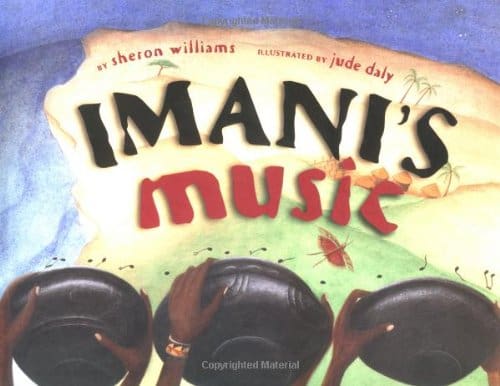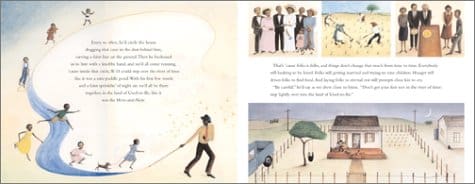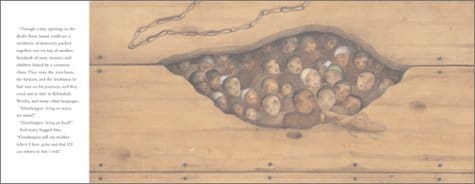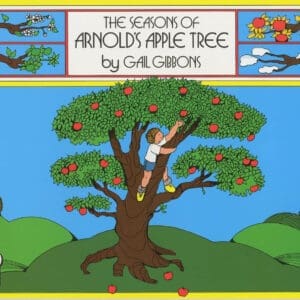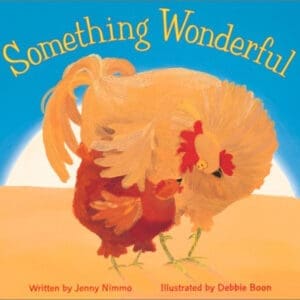Editorial Reviews
From School Library Journal
Gr 2-5-In this story within a story, a narrator recounts her grandfather’s tale about a time when there was no music. The grasshopper, Imani, loved to stay out in the rain and enjoy the gift of music the Ancestors sent to earth along with each rainstorm. But feeling this gift was too wonderful to keep to himself, he begged the Ancestors to send music to the whole world. Soon all of Africa rang with glorious sounds. When Imani was taken aboard a slave ship in the sack of one of the prisoners, it was his music that gave his suffering companions hope. Once on the shores of a strange land, Imani traveled, teaching his songs to the people and to his own children, and those songs can still be heard today. The text effectively evokes the voice of an old Southern storyteller spinning a tale in dialect about a land that “Used-to-Be.” Listeners will enjoy making the “Cush, cush, cush” sounds of the boats; the “Lap, lap, lap” of the waves; and the “Clink, clink, clink” of the chains. The folk-art watercolor illustrations are a perfect foil for the homespun feel of the text. If they look carefully, readers will see Imani himself in almost every picture. The sun-drenched colors depicting the African landscape where people and animals live in joyous harmony contrast sharply with the dark palette used to depict the harsh realities of the slave ship’s journey. A fine tribute to storytelling and the power of music to enrich and heal.
Marianne Saccardi, Norwalk Community College, CT
Copyright 2002 Cahners Business Information, Inc.
From Booklist
Ages 4-9. The power of music and storytelling is celebrated in this picture book that shows how African slaves brought their rich heritage across the sea and transformed their new home. Imani is a song-making grasshopper on the Serengeti Plain, and through him, the Ancestors pour their music on the African world. When Imani and his people are captured and taken to America, Imani brings the slaves their old songs and teaches them new music. The text is long, framed by an account of a grandfather telling the story of his slave grandfather and the land of “Used-to-Be.” But the language is immediate and musical, and the strong blend of fantasy and history is beautifully extended in Daly’s bright narrative watercolors in folk-art style. They show the universal connections, including rolling global views of the ships crossing the ocean and close-ups of the tiny grasshopper bringing music to his people. Hazel Rochman
Copyright © American Library Association. All rights reserved
About the Author
Sheron Williams writes:
I was born and raised Sheron Renay Williams during the “putting down and canning” season in Hampton, Virginia. In my life, I have had the privilege to safely drift far from that time and space, searching for uniqueness, adventure, love, and me.
People often ask me why I write. I write to experience the power of words, to twist them and turn them and make my readers feel and think. I hope that what is important to me, what I think, what I feel, will remain for others to know.
